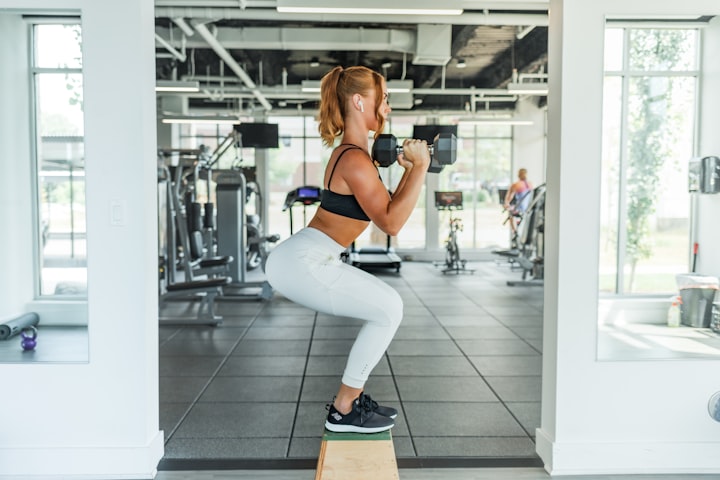The ultimate wight loss diet.
How to make it.

Weightloss and Healthy Life: The Ultimate Guide to Keto
Are you looking for a way to lose weight and live a healthier life? Then the keto diet is for you! Keto is one of the most popular diets for weight loss and improved health, and this guide provides all the information you need to get started. We'll discuss how the keto diet works, provide meal plans, and give tips on how to stay motivated throughout your weightloss journey. So if you're ready to make a change, let's dive in and learn more about the keto diet and how it can help you achieve your weightloss and healthy life goals!
What is Keto?
Keto, short for ketogenic, is a high-fat, low-carb diet. It’s based on the idea that by consuming a very low carbohydrate diet, your body will go into a state called ketosis, which helps your body burn fat instead of sugar as its primary fuel source. The keto diet has become increasingly popular in recent years as a way to lose weight quickly and maintain it long-term.
In ketosis, your body breaks down fat for energy instead of carbohydrates, which causes an increase in the ketones in your blood. This process is what helps you to burn fat for fuel instead of sugar. To achieve this state of ketosis, you must eat a very low carbohydrate diet. This typically means eating fewer than 50 grams of carbs per day and replacing them with healthy sources of fat such as avocados, nuts, seeds, and fatty fish.
Keto followers also restrict their intake of certain food groups such as grains, legumes, and dairy. This helps keep carbohydrate levels low while still allowing for adequate protein and healthy fats in the diet. Additionally, there are many versions of the keto diet, including the standard ketogenic diet, targeted ketogenic diet, and cyclical ketogenic diet.
The keto diet can be very effective for weight loss, especially when combined with regular exercise and a healthy lifestyle. It can also help reduce inflammation and improve cholesterol levels. If you are considering trying the keto diet, it is important to consult with a physician first to ensure that it is safe for you and to understand how to do it correctly.
What are the benefits of Keto?
Keto, or the Ketogenic diet, is quickly becoming one of the most popular ways to lose weight and improve overall health. The Keto diet is a low-carb, high-fat diet that has been proven to have numerous health benefits. Some of the most common benefits of following the Keto diet include weight loss, improved mental clarity, reduced inflammation, improved blood sugar levels, and improved cholesterol levels.
The main benefit of Keto is weight loss. When you follow the Keto diet, your body enters a state known as ketosis. This occurs when the body does not have enough carbohydrates to use for energy, so it starts to break down fat for fuel instead. This process helps to speed up your metabolism and burns more calories throughout the day, leading to weight loss.
Keto can also help to improve mental clarity and focus. This is because when you are in ketosis, your brain uses ketones as an alternative fuel source which provides a more stable source of energy than glucose. This can help to reduce “brain fog” and allow for better concentration and mental clarity.
The Keto diet can also help to reduce inflammation in the body. This is due to the anti-inflammatory properties of healthy fats and proteins that are found in foods such as nuts, fish, and eggs. Reducing inflammation can help to improve overall health and may even reduce the risk of chronic illnesses.
In addition, Keto can also help to improve blood sugar levels and cholesterol levels. This is due to the fact that it reduces insulin resistance, which can help to regulate blood sugar levels. It can also help to reduce LDL (bad) cholesterol while raising HDL (good) cholesterol levels, reducing the risk of heart disease.
Overall, the Keto diet offers many health benefits that make it an ideal choice for those looking to lose weight and improve their overall health.
What can you eat on Keto?
When it comes to eating on the Keto diet, it's all about low-carb, high-fat foods. Generally, the lower in carbs and higher in fat, the better. Foods that are high in carbohydrates should be avoided or limited, such as breads, pastas, and grains.
When it comes to protein, you want to make sure to choose lean proteins such as chicken, turkey, fish, and eggs. It's also important to get plenty of healthy fats such as avocados, nuts, seeds, and oils like coconut and olive oil.
Vegetables are also an important part of the Keto diet. However, some vegetables are higher in carbs than others so it is important to choose the right ones. Non-starchy vegetables such as spinach, kale, broccoli, cauliflower, and cabbage are excellent options. Root vegetables such as sweet potatoes and carrots are to be avoided.
Fruits are also allowed on the Keto diet but in moderation since they tend to be higher in carbohydrates. Low-carb fruits such as berries and citrus fruits can be enjoyed in small amounts.
In addition to these foods, dairy products such as Greek yogurt, cheese, and heavy cream are also permitted on the Keto diet. Low-carb sweeteners such as stevia can be used for baking or adding sweetness to food and drinks.
Overall, the Keto diet is a low-carb and high-fat way of eating that can help you lose weight and improve your overall health. By eating the right foods and avoiding high-carb items, you can easily follow the Keto diet.
What are some recipes for Keto?
Keto diets are all about consuming high-fat, low-carbohydrate meals that help the body enter a state of ketosis. In this state, the body begins to burn fat as an energy source instead of carbohydrates. Eating the right types of foods is key to success on the Keto diet, and there are plenty of delicious recipes you can make while still sticking to your keto goals.
One popular breakfast option is a keto breakfast sandwich. This consists of an egg omelette topped with cheese and meat, and it can be served on a low-carb bread or in a wrap. Another great breakfast choice is the classic egg scramble. Eggs are full of healthy fats and protein, and you can mix them up with vegetables such as bell peppers and spinach for added flavor.
For lunch, salads are always a great option when eating Keto. Choose dark leafy greens as your base and top it off with healthy fats like avocado, nuts, and feta cheese. If you’re looking for something heartier, try making a tuna melt or tuna salad sandwich on low-carb bread.
Dinner is another opportunity to get creative with Keto recipes. Try making a vegetable-heavy stir-fry with lean proteins like chicken or shrimp. If you’re in the mood for something more comforting, try making a creamy casserole dish with cauliflower and cheese.
These are just some ideas to get you started when it comes to recipes for the Keto diet. By incorporating healthy fats and limiting your carb intake, you can enjoy flavorful meals while still losing weight and reaching your health goals.
What are some workout routines for Keto?
When it comes to exercise and weight loss, the ketogenic diet offers some unique benefits. It’s important to know that a proper workout routine should be included in your keto lifestyle to maximize the benefits of the diet.
One of the main reasons why people are drawn to the ketogenic diet is that it is low in carbohydrates. This means that your body will primarily be burning fat as its primary fuel source, which can make for some interesting effects when it comes to working out.
A typical keto workout should involve both aerobic and anaerobic exercises. Aerobic activities like running, swimming, biking and other cardio exercises help burn calories and fat. Anaerobic activities such as strength training, high intensity interval training (HIIT) and circuit training will help build muscle mass and increase metabolism.
The best way to get started with a keto workout is to begin by doing at least 30 minutes of moderate to intense activity each day. Start by doing a few sets of 10 to 15 reps on various strength training exercises like squats, deadlifts, chest press and shoulder press. After a few weeks, you can increase the intensity by adding more reps or increasing the amount of weight used.
In addition to weightlifting, it’s important to also incorporate some form of aerobic activity into your keto workouts. Running, walking or cycling are all great ways to increase your heart rate and burn calories. If you don’t have access to a treadmill or bike, you can also try other activities like jumping rope, rowing or swimming.
Finally, HIIT is a great way to get the most out of your keto workout. HIIT involves alternating between intense periods of exercise followed by short periods of rest. This type of workout is highly effective for burning fat and improving endurance.
By incorporating aerobic and anaerobic exercises into your keto lifestyle, you’ll not only be able to maximize the benefits of the diet but also experience improved overall health and wellbeing.
What are some tips for success on Keto?
1.
Start Slowly: Trying to jump into the ketogenic lifestyle all at once can be overwhelming and hard to sustain. It’s best to start slowly and gradually adjust your food choices over time.
2.
Stick to Whole Foods: The most important part of any diet is eating whole, nutrient-rich foods. This means avoiding processed and packaged foods as much as possible. Stick to fresh vegetables, lean proteins, healthy fats, and low-sugar fruits.
3.
Meal Prep: Meal prepping can help you stay organized and consistent with your keto meal plan. Plan out your meals for the week ahead of time and make sure you have the ingredients on hand.
4.
Drink Plenty of Water: Water is essential for staying hydrated and healthy on the keto diet. Aim to drink at least 8 glasses of water each day.
5.
Track Your Macros: Knowing exactly how many grams of fat, protein, and carbohydrates you’re consuming is crucial for success on the keto diet. Tracking your macros can help ensure that you’re getting the right balance of nutrients in your meals.
6.
Get Enough Sleep: Getting adequate restful sleep is important for both physical and mental health. Aim for 7-9 hours of sleep each night to ensure your body is functioning optimally on the keto diet.
7.
Exercise Regularly: Exercise is essential for weight loss and overall health. Aim to get in at least 30 minutes of exercise every day, in
cluding both strength training and cardio workouts.
Start the diet now. Buy it Here.





Comments
There are no comments for this story
Be the first to respond and start the conversation.